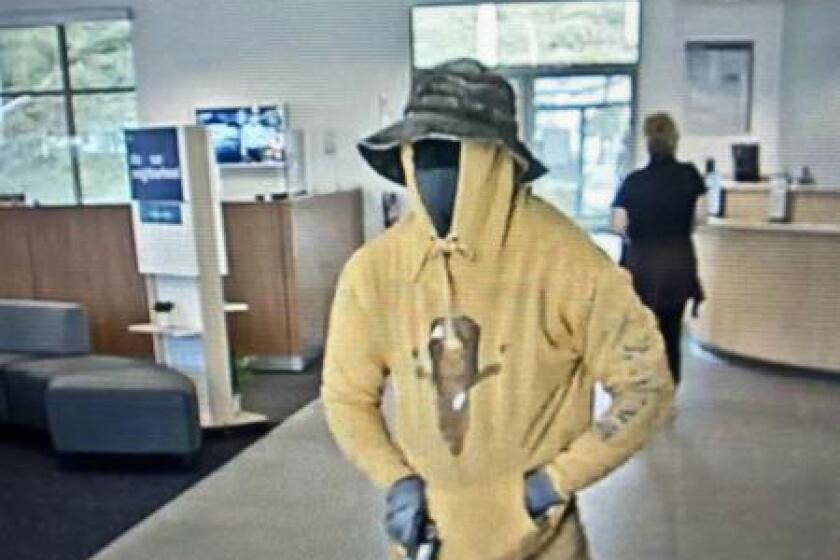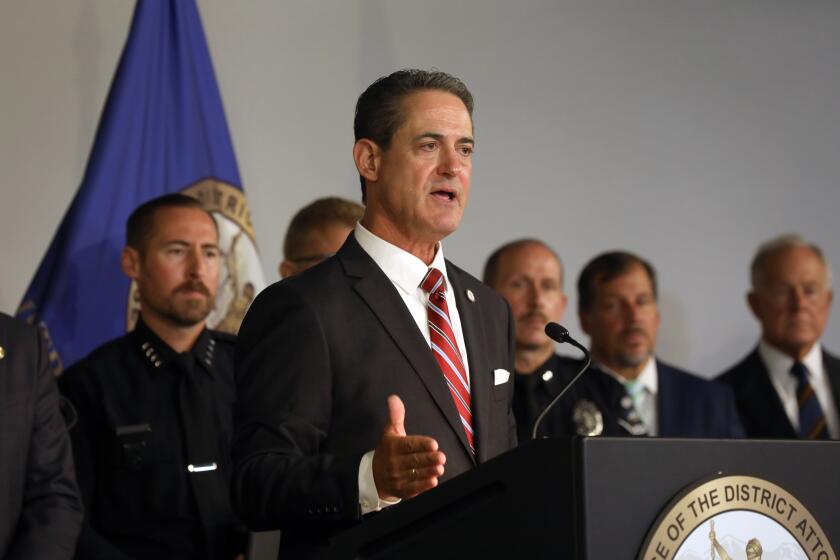More Muscle for the LAPD
Los Angeles Mayor Tom Bradley plans to add 250 officers to the undermanned Los Angeles Police Department. They would expand the force to 7,750 members, a historic high. Every additional officer would be welcome, but hundreds more are needed to control crime among the city’s large and diverse population and to patrol its sprawling territory.
If the mayor’s budget proposals are approved (and politics alone would suggest a majority vote from the Los Angeles City Council), the rookies will be on the streets next spring. But according to a study by the Public Administration Service, a Virginia consulting firm, that would be just the beginning. Based on the recommendations, the LAPD estimates that it needs 9,000 members to respond to emergency calls in five minutes or less and still have enough forces for adequate routine patrol--a long-term goal.
The department’s interim goal, the report says, should be to have an average response time to calls for help of seven minutes and still have adequate time for routine patrol. Even that level of improvement requires more officers.
To put more police on patrol, the department is switching to a new deployment formula, also recommended by the consultants. The new system promises broader, more uniform protection and faster emergency response throughout Los Angeles. That will be a welcome change, especially in areas where life-threatening crime is common.
Under the new deployment formula, the LAPD promises to put more police on patrol in every division as 358 new officers start graduating from the Police Academy, some as early as next month. Lawyers for the National Assn. for the Advancement of Colored People and the American Civil Liberties Union promise to monitor the numbers to ensure equal police protection.
The new formula came about after years of pressure from two well-organized community groups, the South-Central Organizing Committee and the United Neighborhoods Organization, which represent 100,000 families on the Southside and the Eastside. They campaigned for more police and faster response. They enlisted support from the NAACP and other leaders, who argued that the LAPD shortchanged their areas. Their complaints prompted the Los Angeles Police Commission to authorize the independent study.
Although the report originally mentioned higher response times, its final conclusion was that the median response time throughout the LAPD was nine minutes, with variations from one bureau to another of less than a minute. And, it added, that response time could and should be tightened up.
Los Angeles Police Chief Daryl F. Gates agreed, citing response times from just over seven minutes in one bureau to just under nine minutes in another, based on data collected in January. The department adopted the new formula on Tuesday at the request of the Police Commission.
Also at the direction of the Police Commission, the LAPD will review the functions of all sworn personnel who are not assigned to patrol. That may put a few more officers on patrol, but it cannot solve the department’s basic policing problem. That will take more officers.
More officers can provide a greater sense of security, particularly in areas under siege. It is up to the mayor, the City Council and other leaders --perhaps with continued prodding from the SCOC, the UNO and the NAACP--to demonstrate a stronger commitment to public safety.
More to Read
Sign up for Essential California
The most important California stories and recommendations in your inbox every morning.
You may occasionally receive promotional content from the Los Angeles Times.










